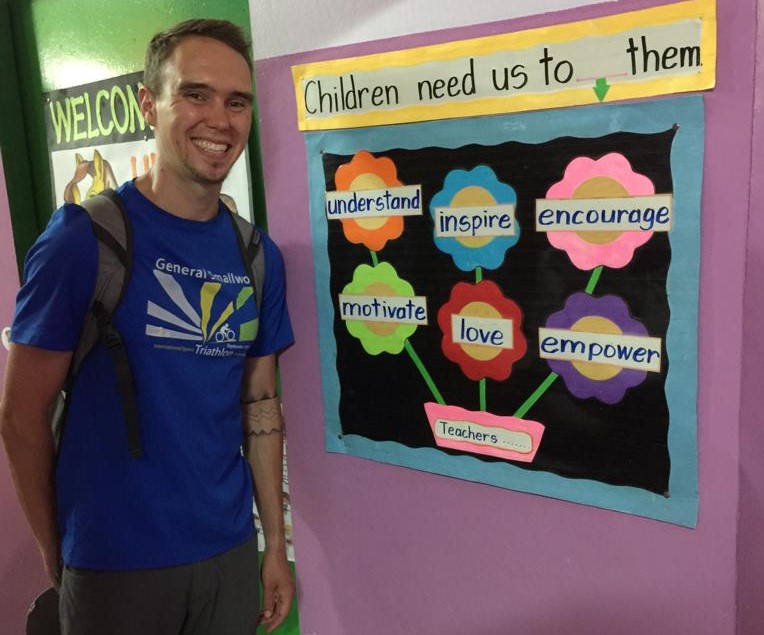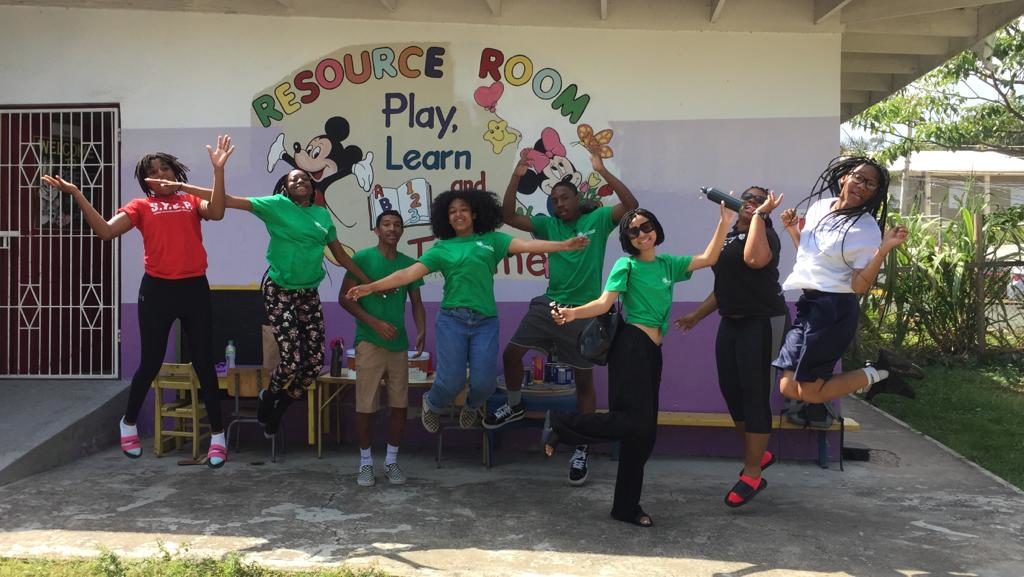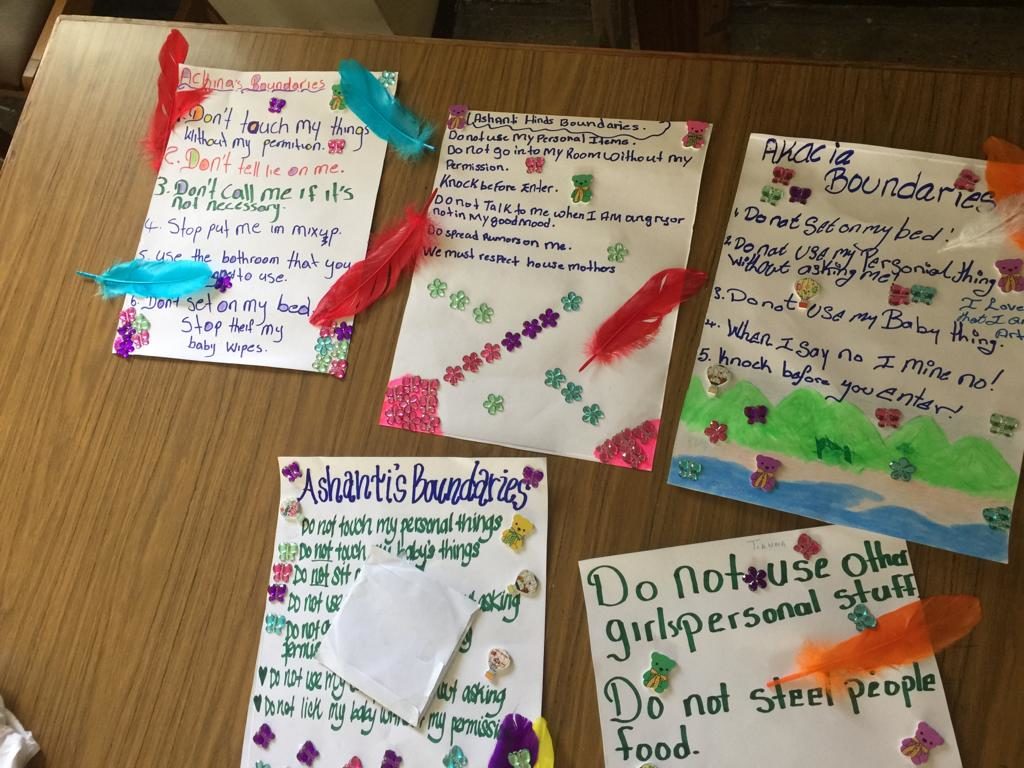
What does meaningful change really look like? We’ve all learned about the work of great change agents such as Martin Luther King Jr. and Nelson Mandela. We may have even attended a panel event where current change-makers share their experiences. But, to really understand what meaningful change looks like, you have to experience it first-hand.
The goal of LearnServe International is to create these experiences for high school students in the DC-Metro area. I had the privilege of co-leading a LearnServe program to Jamaica last month. In this program, LearnServe students investigated how to create lasting change in communities and then traveled to underserved communities in Jamaica to try implementing what they had learned.

This experience created an incredible opportunity for students to see what meaningful change really looks like. I don’t think it was what any of them expected. One conversation over lunch (and the debrief that evening) encapsulated many of the lessons our students learned during the trip. I want to share that lunch conversation and our takeaways from that conversation.
—
It was lunchtime at Mary’s Child, a Jamaican organization dedicated to supporting teen mothers in Kingston. The LearnServe group sat in a dim, hot classroom. The whirl of eight ceiling fans overhead did little to improve the mood as we ate the same hot lunch of fried meat, rice, and pasta that’d we’d eaten for the last several days. This was our second week in the country and our second day at Mary’s Child. Our goal was to use the human-centered design process to improve the lives of the teen mothers at Mary’s Child. We had two and a half more days and we spent this lunch reflecting on how the process had gone so far and what our next steps were.
Who decided this?
The human-centered design process begins by digging deeply into the lives of the people we aim to serve and identifying their challenges. Our students spent their first day at Mary’s Child building relationships with the teen mothers by talking to them in small groups. The conversations started on easy topics such as what their favorite movies were. As the day progressed, the teen moms became more comfortable with the group and started volunteering more personal stories about their lives at Mary’s Child. The day ended with the LearnServe students interviewing the teen moms about their challenges at Mary’s Child.
The students took detailed notes during the interviews. After we returned to our dorms, the students conducted a gallery walk activity where we taped all of the notes from the interviews to a wall and students read the notes silently, marking with a pen where they saw trends. After the gallery walk, the students debriefed as a group and concluded that the trend which had come through the strongest was that the teen moms did not feel respected by their peers. This became our challenge statement for the human-centered design process. There was a sense of accomplishment in the group and we left for dinner feeling confident about the next day.
Now, during our lunch on day two, the mood had changed as students processed this challenge statement. The plan for the afternoon was to lead a brainstorming session with the teen moms to come up with ways to address our challenge statement. As we laid out our plan, many students realized that they didn’t want to work on the problem of teen moms not feeling respected by their peers and voiced these concerns. It was hard for many students to move forward knowing that the challenges of the teen moms did not align with their own interests.
We set aside the brainstorming plan for now and spent the rest of lunch digging into these frustrations. This moment became the first lesson of the day. Creating meaningful change for someone else means letting go of your stake in the process. It doesn’t matter what you want. It matters what they want.
I don’t have the answers.
A couple of students who felt confident about the previous day’s activity asked the group why they didn’t want to work on the challenge statement of teen moms feeling disrespected. The students with reservations explained that they weren’t counselors or therapists. They had no idea how to help teen moms treat each other with respect. This problem was really, really hard to solve and many in the group wanted to do something that had a clearer and more tangible result.
When we had arrived at Mary’s Child the day before, the Executive Director (knowing that we had a budget of $500 for our project there) asked us if we could buy and set up a trampoline for the teen moms. She felt strongly that this would improve the experience at Mary’s Child and hoped that the trampoline and other outdoor activities could be the focus of our project.
Knowing this, several students in our lunch discussion advocated for buying the trampoline instead of helping the teen moms work on respecting each other. After all, the executive director knew better than we did what the teen moms needed. Setting up a trampoline was something that we as a group could definitely accomplish.
This discomfort with the ambiguity of our project became the second lesson of the day. As change-makers, we don’t have all the answers. In fact, the people we are trying to serve often have more answers then we do. All we can do as changemakers is listen closely and help those we are serving to solve their own problems.
This is hopeless.
At this point, the co-leaders inserted ourselves into the conversation to make two points. First, we pointed out that, even though the Executive Director wanted a trampoline, none of the girls had mentioned a trampoline or a desire to spend more time playing outside in their stakeholder interviews. Second, we hadn’t even made it to the brainstorming stage of the human-centered design process yet.
With that, a sense of hopelessness descended upon the group. They could clearly see that buying a trampoline did not directly address the challenges shared the day before. At the same time, they had no idea how a brainstorming session would help a group of pregnant teenagers and new teenage moms get along with each other. As our lunchtime came to an end, it was time to make a decision about how to move forward. The group decided to split into two teams. One team would work with the teen moms on the challenge they had identified and the other team would purchase and set up the trampoline. That way, we met the needs of all the stakeholders that we had interacted with at Mary’s Child.

This decision became the third lesson of the day for the group. Even with a path forward, creating meaningful change is hard. Sometimes, the problems will feel insurmountable. But, there are problems most worthy of our time and energy. Maybe we’ll create something transformative and maybe we won’t. What’s certain is that we’ll address the greatest needs of the community we’re serving where even a little progress can go a long way.
—
By the end of our time at Mary’s Child, the LearnServe group had accomplished so much. Yes, we bought and set up a trampoline which the teen moms seemed to really enjoy. We also brainstormed how the teen moms could feel more respected and identified two areas to focus on – group bonding and clearer personal boundaries. The sessions with teen moms turned into group therapy sessions where the mothers shared their frustrations and how they wanted to be treated. They also shared what they loved and admired about each other. By the end of the four days, all of the moms had created a personal boundaries poster that they displayed on the doors of their rooms. They also shared that they felt much closer to each other than before.

I’m so proud of the LearnServe students for grappling with some of the most challenging aspects of change-making. Those who stuck with the human-centered design process co-created simple, yet powerful ways of addressing the concerns of the teen moms. Those who set up the trampoline created a space for the moms to feel like teenagers and build relationships with each other. Through this work, all of the students challenged their own ideas about what it means to serve others and found creative ways to address the needs of their stakeholders. For me, that’s what creating meaningful change really looks like.
Our students arrived at their first powerful lesson about what meaningful change is like. The process is not about you as the change agent. It’s focused solely on those you are trying to serve. True agents of change follow that process where ever it leads.
This is hopeless.
I don’t have the answers.
This is what the seeds of meaningful change truly look like.
Human-centered design means stakeholders decide, not you.
This isn’t about doing something easier, it’s about doing something hard.
We aren’t here to solve people’s problems. We’re here to empower them to solve their own problems.
Ryan Steinbach
LearnServe Jamaica 2019 Trip Leader
DC International Public Charter School
@r_steinbach
